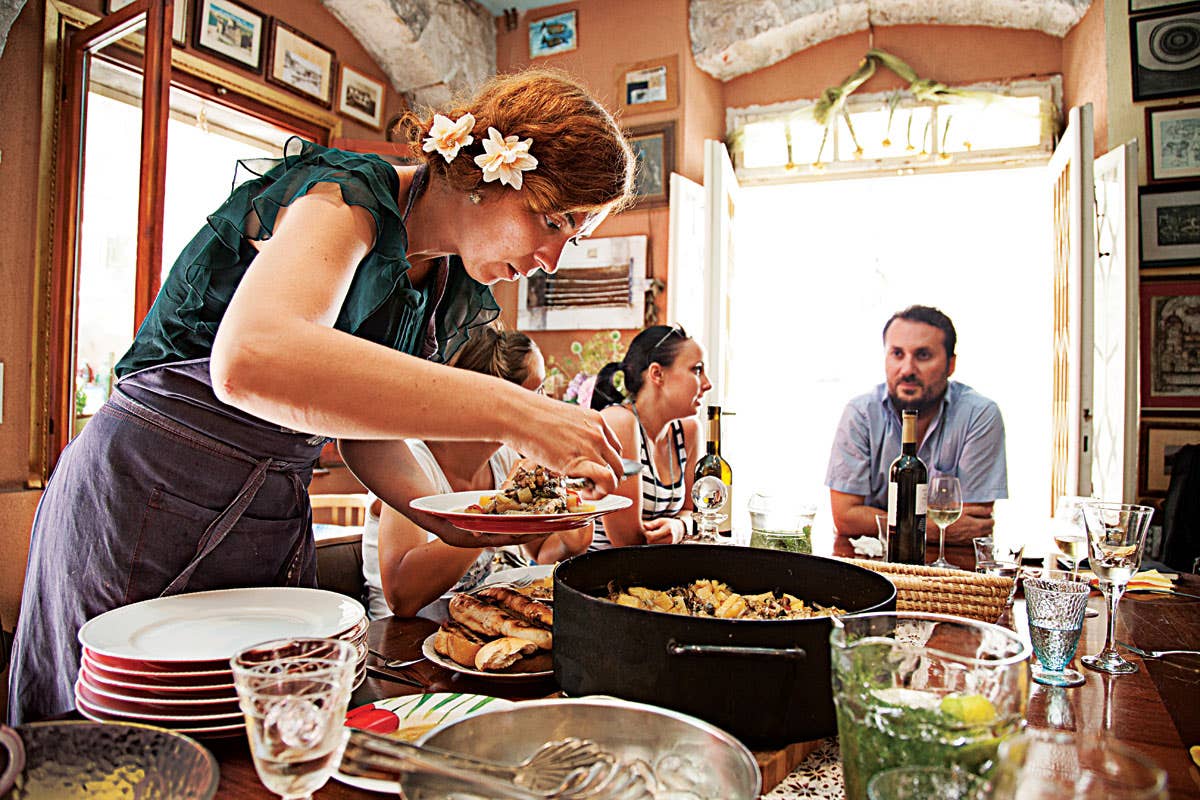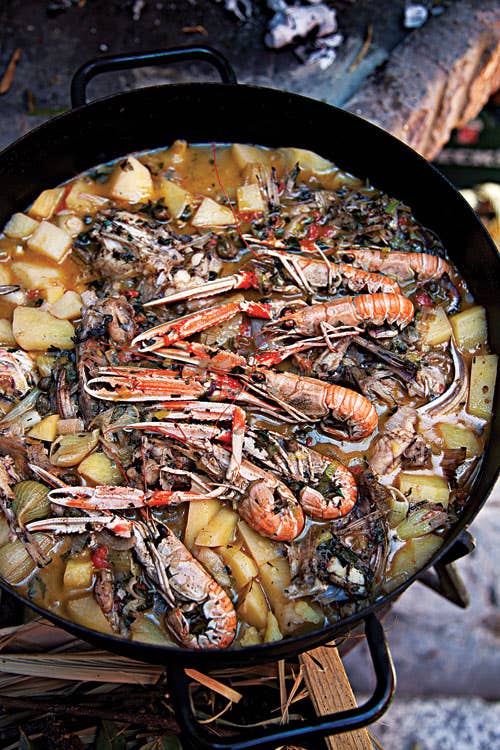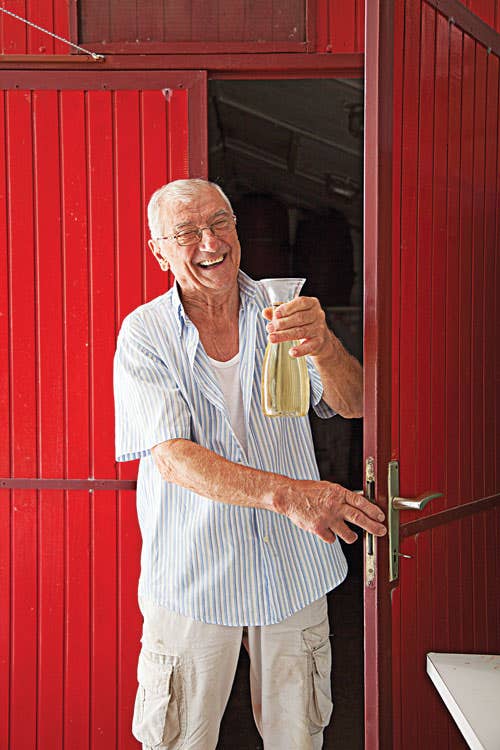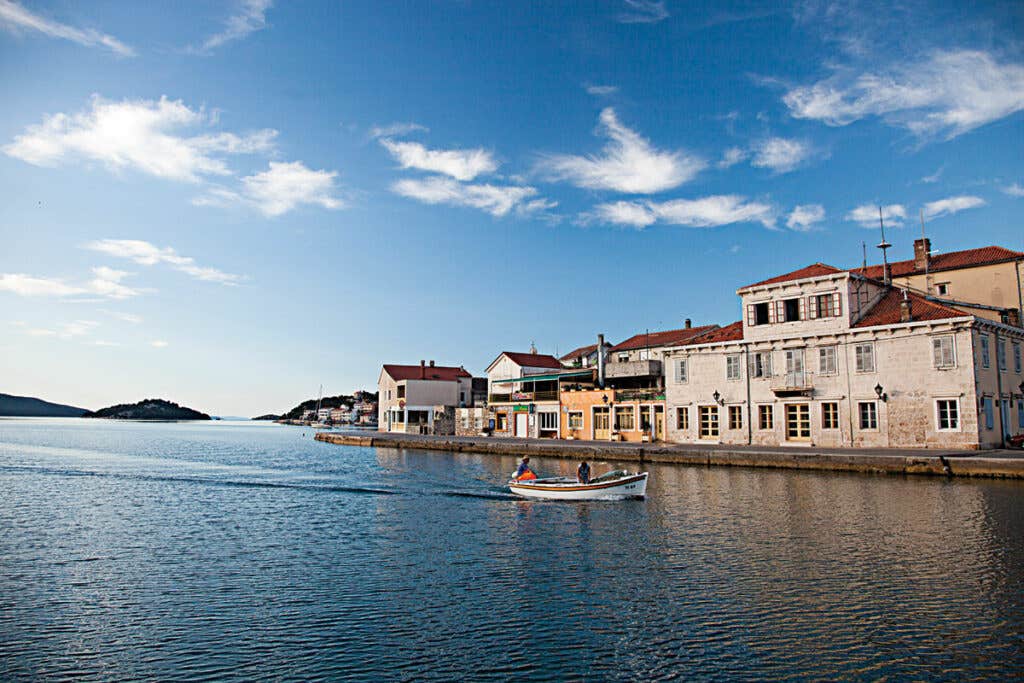
Splendor of the Isles
Pristine seafood is at the heart of home cooking in the villages along Croatia’s Dalmatian coast, hundreds of miles of jagged limestone islands dotting the Adriatic Sea
They say that when God finished creating the world, he chucked a handful of leftover rocks into the Adriatic. My ancestors hail from one of those rocks: the tiny island of Murter in Dalmatia, a 233-mile stretch of coastline in the middle of Europe staring at the back of Italy's boot. The former summer playground of Roman emperors, Hapsburg aristocrats, and comrades on workers' holiday, this part of Central Europe was passed back and forth between the Italians, the Austro-Hungarians, and sometimes the Turks for centuries. All of them enjoyed the coast's most prominent charm: its exquisite seafood.
For millennia, people here have drawn their livelihoods from the waters of Croatia's Dalmatian coast, which hugs the Adriatic Sea. The local cuisine is centered on the hundreds of fish and shellfish species that thrive in the crystal clear bays and inlets: mackerel, sea bass, squid, oysters, langoustines, mussels, and more.
It's hard for me to believe it now, but as a boy my grandfather—my Dida, as I called him—struggled in this place of abundance. Croatia's economy lay in ruins after World War I. When my Dida sought work, he found it where Dalmatians have found it for centuries, at sea. Eventually he jumped ship, slipped into America, fell in love, and started a family. But he never forgot his hometown of Tisno, a fishing village on the Dalmatian coast, and when I was ten, he brought me here for a summer. I turned brown as toast. Though my tan faded afterward, my love for the island never left me.

Then, Croatia was still part of Yugoslavia. Over the years, I've gone back to see my extended family dozens of times, and while the political landscape has shifted—today Croatia is a sovereign nation with a freely elected government—Tisno hasn't much changed. On my most recent visit, my mother, Neda, traveled with me, both of us eager to reconnect with our family, to spend languorous days at the beach, and—as ever—to eat.
When we arrived, before traversing the bridge from the mainland, we stopped by my cousin Ante's house for the keys to my family's flat. He gave me a jug of homemade wine and an order disguised as an invitation: “After you get settled, come over for ručak.”
Appearing for ručak—lunch—is my only duty in Croatia. I, like thousands of others, come here in summer to escape responsibility. I read Nabokov, swim, and nap. And in the middle of the day, I break bread with family and friends. Ručak is the time for grilled fish and for gossiping over plum brandy. But just at that moment, I was in no mood to eat. The transatlantic flight from the U.S., followed by a white-knuckle drive from Split on Croatia's frenetic highways, left me with just barely enough energy to open the windows and fall into bed.
At twilight I awoke to the sound of kids in flip-flops slapping past my window. My mother waited on the porch. Since our cupboard was bare, we were having our first meal in a restaurant in Jezera, a neighboring village. Cicadas screeched. The moon was a fat blue egg. The air smelled of lavender and pine.
We headed to the Zlatna Skoljka, the Golden Shell. My family doesn't eat out much, but when they do, they come here. It's a small, bare-bones restaurant where things are done right. We took a table on a terrace overlooking the harbor and I ordered crni rižoto, black cuttlefish risotto, a one-dish meal made from cheap, plentiful ingredients—rice, fish broth, and cuttlefish, its ebony ink adding an iodine intensity. The owner brought us some malvasia, a crisp white wine that smelled of citrus and apricots. Within minutes the remnants of ink on my dinner plate looked like an abstract painting.
The following morning we headed to the town of Murter, the island's namesake, five miles north of Tisno. From Murter's small dock, a fisherman took us to the tiny island where Opat, a restaurant that began as a way station for local fishermen in the early 1900s, is perched. We motored out amid jagged limestone islets. When we arrived, ten or so men were hollering and splashing about in the water, giving the place the feel of a pirate's cove. It was the restaurant's staff, blowing off steam. “Living here can make you a little crazy,” said Ante Božikov, the third-generation owner, pointing at his head as he greeted us. “I send them home to see their girlfriends every two weeks because otherwise they will go out of their minds.”

Inside his open-air dining room, fish are grilled over flames fed with olive wood. "This was the easiest way for fishermen to cook. You just start a fire between two rocks and begin," Božikov said. We ordered langoustine na buzaru—the delectable crustaceans sautéed with tomatoes, parsley, bread crumbs, garlic, and wine—and sopped up the sauce with hunks of bread, reveling in a coveted treat.
“It used to be that you could put your hand in the sea and pull out a fish,” he said. But the world caught on to the quality of the riches of the Adriatic, and now restaurants from Tokyo to Las Vegas bid on the catch. Croatian fishing boats meet up with their Italian counterparts and hand off their best stuff for euros.
Later, back in Tisno, I related Božikov's story to a Croatian pal and was relieved when he assured me that, despite global demand, there were still local markets for pristine fish. “You must meet my friend Tatjana tomorrow,” he replied. “She will show you where to get amazing seafood.”
“Hurry. You are going to ruin my reputation with the fish people by making me come so late!” Tatjana Ciciliani pulled me into the ancient fish market in the coastal city of Trogir, 90 minutes south of Murter. We ducked under an archway and entered what looked like Poseidon's larder: Trays of sardines, mackerel, and scorpion fish lay between mounds of shrimp, eels, and squid. Ciciliani lifted, grabbed, and squeezed. “You must make sure their eyes are clear, that the scales feel smooth,” she said.
Ciciliani, a 30-something mother of two, beamed and bantered as we made our way to her house within the moat-ringed stone maze of Trogir's old town. I followed her into her courtyard, where dappled sunlight hit jars packed with brandy-soaked cherries and artichokes in grappa. We surveyed our purchases and decided to cook the quintessential Dalmatian dish, a hearty fish stew called brodet. You can use any fish in brodet, but monkfish is preferred. For good measure, Ciciliani threw in calamari, plus two small sea robins, named for their winglike pectoral fins.
While the possibilities for what goes in a brodet are endless, the options on how to cook it are not: You put the pot on the fire and don't stir; 30 minutes later, you are done. Around two, everyone seemed to know it was time for ručak. Ciciliani's children returned from sailing lessons with their instructor in tow. Her husband, an assistant to the local harbormaster, stopped by from work. We ate sardines with capers, breaded eels, and, offsetting their richness, sharp, crisp radish slices tossed with mayonnaise, olive oil, and lemon juice. Wine was poured. When the brodet was served it looked like a child's cartoon of a fish stew, with chunks of fillet, squid rings, and eel parts. The monkfish was sweet and chewy, the fragrant broth the color of gold. A tourist poked his head in the open window and asked to take a picture. We toasted him.

The next day, my mother and I finally went for ručak at my cousin Ante's. When we arrived, his wife, Seka, was making soup. A row of fish rested like bars of silver in a marinade next to the stone oven. "In Croatia, a fish must swim three times: once in the sea, once in oil, and once in wine," Ante said.
As was custom, we started with the soup, a straightforward fish broth fortified with rice, its heat and starch preparing our stomachs for the meal to come. Ante served us each a grilled bream, and we set to work picking at the flaky white fish, its skin crisped and charred from the grill. Seka passed a bowl of blitva, young chard steamed with potatoes. I sucked the spine of my fish clean and laid it on my plate. A breeze came up on the patio.
"Dalmatian cooking is simple, really. Fish, oil, vegetables, salt, and pepper, and that's it," Seka said, shrugging. Behind us the town was still. Plum cake appeared but no coffee—after ručak, always, comes a nap.
Keep Reading
Continue to Next Story










